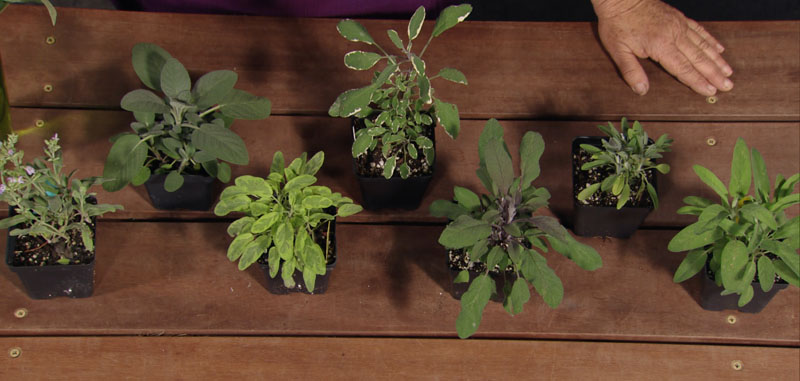Sage Advice: Trisha Shirey

Sage has a well-deserved reputation for being a bit fussy about its growth requirements. A member of the mint family, it is not as easy going as other mint family members. It prefers a sandy soil that drains quickly and needs at least a half day of sun. Morning sun and late afternoon shade would be an ideal location.
High humidity and heat or too much rain can cause it to shrivel and die so many gardeners treat sage as an annual. I often need to replant it after the dog days of summer have stressed it.
Few pests bother sage and deer won’t bother it either. Bonus: bees love its flowers!
If your soil tends to be more clay-like and holds water, plant sage in hills or in raised beds. Avoid mulching the plants or use pea gravel or granite rock around them to keep the base of the plant drier. Fuzzy leaved plants like sage don’t like water sprayed on the foliage, so they do best with drip irrigation.
Sage is used for Southern style cornbread dressing and for flavoring turkey, also in pork sausage, but it works well with beans, onions, potatoes, bread, cheese, meat marinades and sauces and even with pear and apple dishes. I enjoy sage and apple cider vinegar too.
Sage has been used for centuries for medicinal uses. Sage comes from the Latin word salvere which means to be saved. It was once used as commonly as aspirin is today. It is good for the memory and as an aid to the digestive system. A tea brewed from the leaves is soothing for a sore throat and it can be used as a mouth rinse due to its antibacterial and anti-inflammatory properties.
Sage leaves are dried and used in sleep pillows to promote relaxing sleep.
Salvia officinalis or garden sage is the most common variety. It grows to about 24 inches when mature but mine seldom last long enough to get that size. There is a dwarf sage that has smaller leaves and is well suited to container planting or in rock walls. Purple, golden and tricolor are very ornamental but not as flavorful as garden sage.
Salvia officinalis “Biergarten” has wider leaves and a much more robust flavor. Use less of this one when cooking. It tends to be more tolerant of heat and humidity than garden sage and this type rarely flowers.
Nazareth sage is a hybrid of Salvia officinalis and Greek sage from Israel that grows taller and has largerleaves than common sage. It is more tolerant of heat and humidity and is an attractive landscape plant as well as a useful culinary herb. The flowers are beautiful in arrangements also. This plant was another find by Texas herbalists Madelene Hill and Gwen Barclay. It is also known as Fruiticosa Sage and Newe Ya’ar sage. Prune it frequently, especially after it blooms to keep it from being woody. I have had this sage in my garden for over 15 years and it is still robust and healthy.
Sage leaves are best used fresh but can be dried and stored. The flavor declines quickly with storage so replace your dried sage after 6 months or so. Rub the leaves to release the essential oils before adding it to foods. Sage flowers are edible too and have a sweeter and more subtle flavor than the leaves.
categories:
tags:
